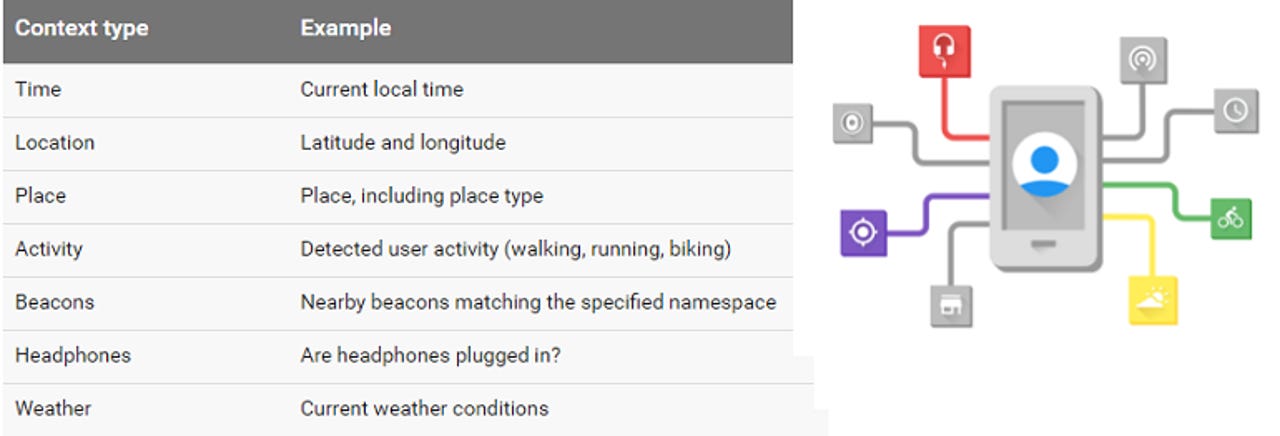How Google's Awareness API applies to digital transformation efforts, but note best practices

Google's Awareness API and tools -- designed to passively monitor signals and user context -- will likely garner corporate interest on multiple fronts as a way to better target customers.
Like most things Google, there's a balance between what's creepy and ridiculously useful. Google's Awareness application programming interface is a sensing platform that enables developers and apps to be aware of location and context signals. The API will manage battery, memory and resources in the background.
Here's a look at some basic context types.

One of the first implementations of the Awareness API, which was made available to developers over the summer, is an H&M Group app that designs clothing based on a user's context signals. Also: Google, H&M partner to design you a dress based on your daily habits
As Google explains:
The Android app specifically uses the Snapshot API within the platform to passively monitor each user's daily activity and lifestyle with their permission. Where do you regularly eat out for dinner or hang out with friends? Are they more casual or formal meetups? What's the usual weather when you're outside? After the course of a week, the user's context signals are passed through an algorithm that creates a digitally tailored dress design for the user to purchase.
Now when this information is combined with beacons, local marketing and other data you can see where everything from omnichannel retailing to various forms of marketing and commerce can be affected.
Here's what companies and developers need to know:
- Google's APIs for personalization and context operate as a trio. The Fence API allows you to react to changes in an environment and create fences. Fence is short for geofencing, or creating a ring around a geographic location and give an app callbacks. A Snapshot API gives you a rundown on the environment and system conditions. The Awareness API manages the location and context signals.
- There is a bit of a creepy factor. Companies can be first movers, but there's a line between the personalization tools and constant monitoring--even with an opt-in system. Google's Best Practices document outlines some of the moving parts when it notes that developers need to "be mindful of user expectations."
- Do no harm and don't annoy. All of this context is great data, but companies need to be conservative with notifications and conserve system health. In other words, don't annoy customers by being overly helpful and draining the battery.
- Each use case will vary. While commerce and marketing are obvious wins, this personalization and context-aware approach could be used in multiple industries. Smart city and smart home applications could be handy. Perhaps Caterpillar could use special apps that work for construction crews. Medical uses are possible -- by knowing a patient's context and environment. The use cases for environmental context are almost infinite.
Bottom line: Decision-makers may want to have their developers look into how awareness could change business practices and start storyboarding use cases.